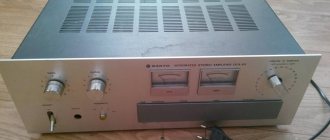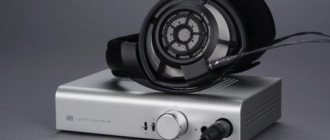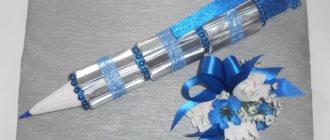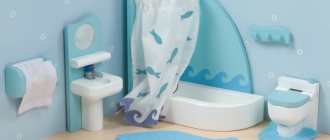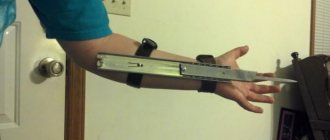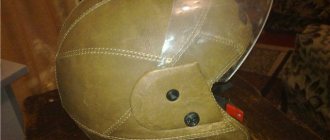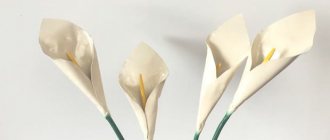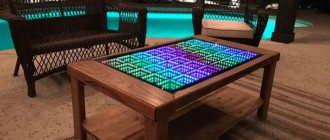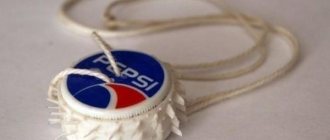Many radio amateurs are not satisfied with the sound of industrial sound systems, so the problem of how to make a speaker amplifier with your own hands is an interesting one. There are many schemes that are suitable for repetition by beginning radio amateurs. They are assembled using accessible and inexpensive parts, are easy to manufacture and do not require complex setup. You can first make a sound amplifier of the simplest type , and then move on to more complex designs.
Powerful DIY sound amplifier
A radio amateur planning to make a low frequency (LF) system must resolve a number of the following issues:
- Element base
- Electrical parameters
- Scheme selection
Modern sound systems are assembled using bipolar or field-effect transistors and integrated circuits. Such designs do not require high voltage in the power supply circuits, are quite compact and provide a good range of reproducible frequencies and a low percentage of distortion. High-end audio equipment is assembled using vacuum tubes, which have not been used in mass-produced technology for a long time. Electrical parameters depend on the purpose for which the ULF will be used. The design, intended for connection to a tablet or computer, does not imply high quality sound reproduction.
For a specialist, it will be easy to assemble an audio amplifier with your own hands , providing fairly high parameters. In this design, you can use powerful transistors or microcircuits. The block can be designed to work with devices that produce a powerful output signal. Then a preliminary cascade is not required and it is enough to assemble only the tip. If the device is intended to work with a microphone, turntable or electric guitar, then you will have to assemble a complete path with a preliminary stage and tone controls. The easiest way to assemble a final power amplifier with your own hands This design is assembled on a simple printed circuit board, does not require adjustments or adjustments, and if assembled correctly it starts working immediately.
The design provides an output power of up to 20 watts per channel, operates from 10 to 18 V, so can be used in a car. This power is provided using the TDA1557 chip. The TDA8560Q can deliver up to 30 watts per channel. For more stable operation of the design when reproducing low frequencies, it is recommended to use 5 2200 µF capacitors connected in parallel in the power filter. The chip body gets very hot, so it needs to be installed on a radiator. To assemble a sound amplifier for speakers with your own hands, you will need a tester and a soldering iron. An oscilloscope and generator are not used for simple circuits.
Ground fault protection circuit
Ground loop is the current that flows from the audio source to the amplifier through the ground shield of the audio input cables. This current will be picked up at the amplifier's input and cause an annoying hum. We recommend using an additional circuit between the main circuit ground and the chassis connection to remove ground loop current:
Under normal operating conditions, low voltage ground loop currents flow through resistor (R1). The resistor reduces this current and breaks the ground loop. In the event of a severe short circuit, the short circuit current may flow through the diode bridge to ground. The capacitor filters out any RF interference picked up by the chassis.
The main circuit ground is connected to the ground loop protection circuit at the “PSU 0V” terminal. The ground loop protection circuit is then connected to the chassis from the Chassis terminal. The connection to the chassis can be made using the same bolt where the ground wire is connected or at a different location.
If you use a ground loop protection circuit, be sure to isolate all input and output connectors from the chassis. Otherwise, there will be a direct path from the main circuit ground to the chassis, and the ground loop protection circuit will be bypassed (i.e., useless).
The ground loop protection circuit can be assembled on a separate printed circuit board.
How to assemble a sound amplifier
It makes no sense for beginning radio amateurs to undertake the task of repeating complex transistor circuits with high parameters. To adjust such structures, complex measuring equipment will be required. The easiest option for beginners would be to repeat circuits made using integrated components. To begin with, you can assemble a simple low-power audio amplifier .
The LM386 chip operates over a wide supply voltage range and provides power up to 1.2 watts into an 8 ohm load. The signal distortion coefficient does not exceed 0.2%. A variable resistor of 4.7 kOhm allows you to change the gain from 20 to 200. A homemade device can be assembled on a breadboard or mounted.
More about coils
FB1, FB2, FB3 = 5 turns of 0.15 mm wire on ferrite beads.
L1 = 7 turns 0.9 mm dia. enameled copper wire; internal diameter 5 mm.
L2, L3 = 7 turns 0.9 mm, winding diameter 5 mm;
L4 = 30 turns of 0.15 mm diameter enameled copper wire on a 1 MΩ resistor with a power of 0.5 W.
In the absence of instruments, tuning can be done by ear - to the maximum quality, using a bad antenna (a small piece of wire).
DIY stereo sound amplifier
to assemble a high-quality stereo sound amplifier for speakers with your own hands , since such circuits require careful adjustment and debugging. There are circuits that provide high sound quality without complex settings. The proposed design is an ultra-linear circuit operating in class “A”. This means that the output signal is virtually undistorted and follows the shape of the input signal. Transistors KT803, KT805 or KT819 can be used in the output stage. From the output of the cascade you can get up to 15 watts of power, and the distortion is minimal and corresponds to the parameters of the highest class equipment.
A circuit operating in this mode consumes a lot of current, and the output transistors heat up in the absence of a signal, so they are installed on radiators. To make your own audio amplifier for stereo speakers, two circuits are assembled - for the right and left channels. If the design will be used for a car radio, then this circuit is sufficient. In other cases, a preliminary stage with gain, tone and stereo balance controls will be required. It is best to solder the audio amplifier on a printed circuit board. The output transistors are mounted on radiators. For reliable cooling, you can use a cooler from a computer power supply. Capacitor C2 must be film.
increase the power of a sound amplifier with your own hands by increasing the supply voltage by 10-15%. First you need to find out the critical voltage values for transistors. In some cases, increasing the input signal will help. This will drive the output stage more efficiently.
The question of how to make a powerful sound amplifier with your own hands often arises among radio amateurs with little experience. It makes no sense to take on a transistor circuit. It is difficult, time consuming and there is no guarantee that the design will work. It is best to use special microcircuits. An integrated ULF can output hundreds of watts, and the circuit does not need adjustment.
Filter block
If you wish, you can also find a lot of filter circuits, since there are now enough publications on the topic of multi-band amplifiers. To make this task easier and just as an example, I will list here a few possible schemes found in various sources:
- the circuit that I used in this amplifier, since the crossover frequencies turned out to be exactly what the “customer” needed - 500 Hz and 5 kHz and I didn’t have to recalculate anything.
– the second circuit, simpler on an op-amp.
And another possible circuit, using transistors:
As yours already wrote, I chose the first scheme because of the fairly high-quality filtering of the bands and the correspondence of the band separation frequencies to the specified ones. Only at the outputs of each channel (band) simple gain level controls were added (as was done, for example, in the third circuit, using transistors). Regulators can be supplied from 30 to 100 kOhm. Operational amplifiers and transistors in all circuits can be replaced with modern imported ones (taking into account the pinout!) to obtain better circuit parameters. All these circuits do not require any adjustment unless you need to change the crossover frequencies. Unfortunately, I am not able to provide information on the recalculation of these crossover frequencies, since the circuits were looked for as “ready-made” examples and no detailed descriptions were attached to them.
The ability to disable filtering on the MF and HF channels has been added to the filter block circuit (the first of three circuits). To do this, two push-button switches of the P2K type were installed, with the help of which you can simply close the connection points of the filter inputs - R10C9 with their corresponding outputs - “HF output” and “MF output”. In this case, the full audio signal is transmitted through these channels.
DIY speaker amplifier for dummies
Typically, designs with high output power are used for subwoofers, but if there are powerful speaker systems, then such a design can be used for sounding large rooms. Such ULFs require a properly selected power source, and for correct operation you need to consider cooling the output stages or the housing of a powerful microcircuit.
A simple high-power low-frequency block circuit can be assembled using several types of integrated circuits, but the pin numbering does not change. Output power (W) corresponds to the following types of chips:
- PA01 – 50
- OPA12 – 60
- TSC1468 – 120
- PA04 – 400
- PA03 – 1000
Homemade sound amplifiers , made with your own hands using serviceable elements and careful installation, can provide good parameters. The structure is powered from a bipolar power source with a voltage of 15 to 45 volts. In addition to PA01, the maximum voltage for which should not exceed 28 volts. Broadband speakers are used as a load, since the amplitude-frequency response is quite linear in the range of 10 Hz-40 kHz. The coefficient of nonlinear distortion at a frequency of 1 kHz and an output power of 50 watts does not exceed 0.005%. Despite the fact that the microcircuits are quite expensive, you can use them to assemble a good sound amplifier .
ULF power supply
Two transformers with blocks of rectifiers and filters were used as a power supply according to the usual, standard scheme. To power the low-frequency band channels (left and right channels) - a 250-watt transformer, a rectifier based on diode assemblies such as MBR2560 or similar, and 40,000 microfarad x 50 volt capacitors in each power arm. For the midrange and high-frequency channels - a 350-watt transformer (taken from a burnt-out Yamaha receiver), a rectifier - a TS6P06G diode assembly and a filter - two capacitors of 25,000 uF x 63 volts for each power arm. All electrolytic filter capacitors are shunted by film capacitors with a capacity of 1 microfarad x 63 volts.
In general, the power supply can have one transformer, of course, but with its corresponding power. The power of the amplifier as a whole in this case is determined solely by the capabilities of the power source. All preamplifiers (timbre block, filters) are also powered from one of these transformers (possibly from any of them), but through an additional bipolar stabilizer unit assembled on a KREN (or imported) MS or using any of the standard transistor circuits.
DIY mini sound amplifier for speakers
Such a design should have a small number of accessible parts, be easy to assemble and not require adjustment. Common and inexpensive microcircuits are best suited for this purpose. They are used in commercial equipment, but they can be used for homemade projects. The design will be able to provide an output power sufficient to sound a medium-sized room. How to make the simplest sound amplifier with your own hands will be clear after reading this article.
to assemble a simple mini sound amplifier with your own hands, using a ready-made module with a RAM8403 chip. This design will not require any discrete elements, since they are provided in the circuit. All you need to do is connect the speakers, power and apply the input signal. The speaker impedance should be 6-8 ohms. Output power reaches 2 watts per channel.
Article Archives
- We are in social networks:
Briefly about the site:
Master Vintik. Everything with your own hands!
– this is a site for those who like to make, repair, and create with their own hands! Here you will find free reference books and programs. The site contains simple diagrams, as well as tips for DIY beginners. Some of the repair schemes and methods were developed by the authors and friends of the site. The rest of the material is taken from open sources and is used for informational purposes only.
Do you like to tinker and make crafts? Send photos and descriptions to our website by email
or through the form.
Programs, diagrams and literature - all FREE!
If you like the site, add it to your favorites (press Ctrl + D)
, and you can also subscribe to RSS news and always receive new articles on the feed. If you have a question about a pattern or craft? Welcome to our forum! We are always happy to provide assistance in setting up circuits, making repairs, and making crafts!
Complete DIY sound amplifier
A complete audio amplifier consists of a pre-stage and a final stage, which can be implemented using transistors or integrated circuits. To assemble an audio amplifier with your own hands, you need to have experience and the necessary technical equipment, since it is impossible to set up such a design without measuring instruments. Block diagram of a full amplifier.
Adjustment of the device can only be performed by an experienced radio amateur. The figure shows the diagram of one input channel. The stereophonic path includes two such circuits. This stage with active tone controls and volume control with compensation can be connected to any final stage. The pre-stage is assembled using a dual high-speed operational amplifier LM833 and a TL071. Instead, you can use op-amp 544 series.
Best models
There are practically no popular models among amplifiers. Such devices are installed extremely rarely, since a modern multimedia system allows you to play music from various media. When determining a popular model, the following points are taken into account:
- Device cost. A proposal of domestic origin costs 1000 rubles. Do not forget that the price determines the basic properties of the device.
- Length of service life. Installing an amplifier involves changing the receiver connection circuit. Therefore, you should connect a device that can last for several years.
- Reliability. The device must operate under various operating conditions: voltage changes, temperatures, humidity and other situations.
- Signal level. This indicator can vary over a wide range.
There are models of domestic and foreign origin on sale. Models of foreign origin are more popular; domestic ones are several times cheaper.
Triad 304
A domestic car antenna amplifier called “Triad 304” costs 650 rubles. There are various reviews on the Internet, many of them negative. The positive points are the following:
- Low price.
- Good build quality.
- It is possible to turn off the device if the signal is strong.
- Optimal functionality.
Such an amplifier does not last for a long period. Therefore, they often give preference to other models from foreign manufacturers.
Prology TFB-100
An antenna amplifier of foreign origin is more popular due to its attractive performance characteristics. The Prology tfb-100 model has the following features:
- The device can simultaneously operate with several antennas.
- High-quality signal amplification is carried out in the digital and analog range.
The device in question is small in size, so installation does not pose any problems.
Master kit
When looking for a universal version, the Master Kit car antenna amplifier is selected. It has the following features:
- The applied scheme is two-stage.
- There are special kits that are easy to assemble. To do this, it is enough to have a soldering iron and the required consumables.
The cost of such sets is relatively low. Therefore, they are chosen to improve the quality of radio signal reception in various bands.
Simple DIY audio amplifier
The simplest do-it-yourself sound amplifier is assembled using a TDA7231 chip . The presented circuit provides an output power of up to 1.5 watts into a four-ohm load. The microcircuit has a large acceptable power supply range, so ULF can be used in battery designs. The device's quiescent current does not exceed 8 mA. The current consumption at maximum power reaches 1.5 A. Any dynamic head with a resistance of 4 Ohms can be connected to the device. This design is not suitable for high-quality music playback due to the high percentage of distortion, which reaches 8% at maximum volume. The device can be used in self-powered electronic toys or security alarm systems.
A simple audio amplifier for home is easily assembled on a 4069 chip, which contains 6 inverters. The system is suitable for connecting headphones when listening to music files from a computer, phone or tablet. A simple circuit provides satisfactory parameters.
By changing the resistance of resistors R2 and R3, you can change the gain of the device. For this ULF it is not necessary to make a printed circuit board. A standard breadboard with plated holes will do.
There are many simple designs that can be repeated by radio amateurs with little experience. To manufacture such devices, you only need a tester to check the main circuits. After you gain experience in the process of manufacturing and setting up simple circuits, you can move on to more complex systems.
Setting up
Setting up an amplifier comes down to setting the required DC mode. By selecting resistor R4, the optimal collector current of the transistor is established, at which the noise figure is minimal.
Such modes are usually indicated in the reference book. Then the frequency response of the input filters is checked, and if adjustments are necessary, the turns of the inductors are shifted and moved apart.
An experimental test of the amplifier was carried out in the city of Fatezh at a distance of 40-45 km from the radio broadcasting stations in Kursk. It was installed in a receiver having a VHF band with frequencies of 65.8. 74 MHz.
Reception was carried out using an external antenna. Without an amplifier, reliable reception of two government radio stations was possible, and one commercial radio station was received with poor quality. After installing the amplifier, it became possible to reliably receive six radio stations operating in this range in Kursk.
I. Nechaaev, Kursk, N. Lukyanchikov, Fatezh, Kursk region. R2001, 1.
